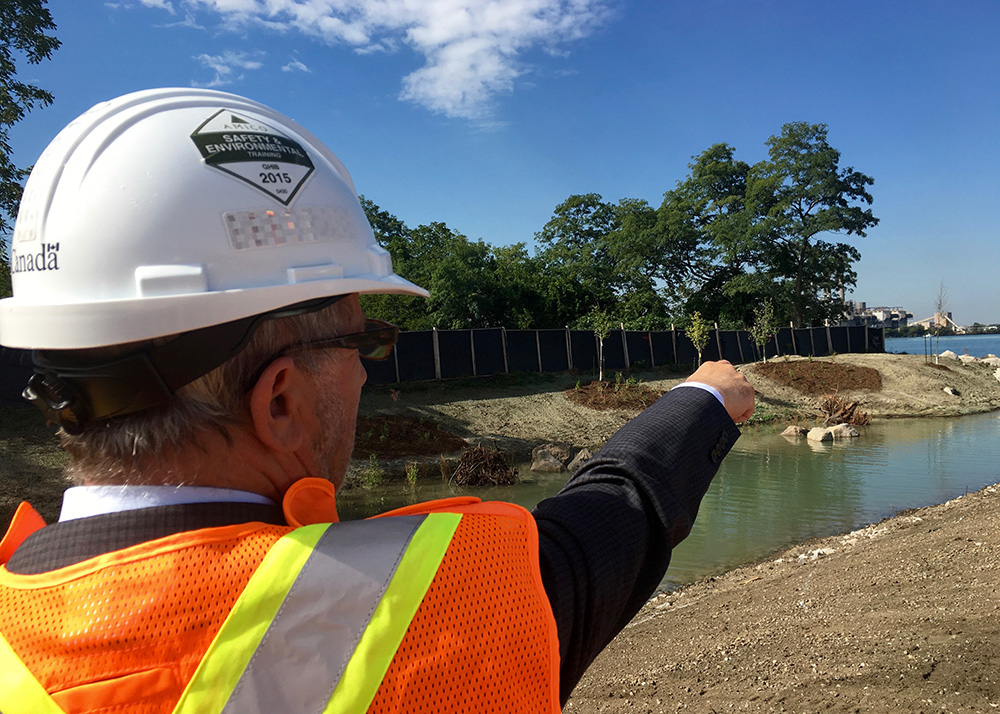By Chloe Kiple

Image: Chloe Kiple
This site in Windsor, Ontario will soon be transformed into the customs plaza for a new international bridge. The Gordie Howe International Bridge will compete with the existing Ambassador Bridge, which is aging. The multi-billion dollar project is much needed to foster and facilitate increased trade between Canada and the U.S., supporters say. The Ambassador Bridge and nearby crossings account for 25 percent of the commerce between the two nations.

Image: Chloe Kiple
Mark Butler points towards a river channel on the construction site. The entire project will span 130 acres (53hectares). The sheer scale of the project means big gains for the economies at both ends of the bridge but also big changes to the environments.
The construction crew keeps a environmental experts on site to monitor the area and suggest ways to minimize harm.
“We’re obligated to do this, and we’re happy to do this,” Butler said.
Already, environmental experts have addressed 450 commitments from the environmental assessment study, including the impact the project will have on migratory birds, water quality and vegetation.

Image: Chloe Kiple
Birds like the bank swallow like to make homes in the nooks and crannies of piles of construction material. To prevent nesting, construction crews slope the sides of a pile to a degree that the birds find undesirable for habitation. If a biologist finds any bird or critter living in something like this, all work stops and the pile is roped off.

Image: Chloe Kiple
The Windsor-Detroit Bridge Authority erected barrier walls such as this snake exclusion fence around the plaza construction site to prevent animals and their habitats from harm. They block creatures from entering and creating homes in the danger zone.

Image: Chloe Kiple
Next to the Broadway Drain that flows into the Detroit River across from the plaza construction zone, a snake lives in a hibernaculum — an artificial burrow between this pair of rocks. Identifying animal habitats helps workers keep an eye out for homes on their site.

Image: Chloe Kiple
Hundreds of tons of material have been cleared from the project site, and in many cases, repurposed for reuse, including furniture-grade logs sent to a mill. More than 400 logs were recovered to manufacture furniture, 200 were sold for firewood and about 2,500 were chipped for landscape use.